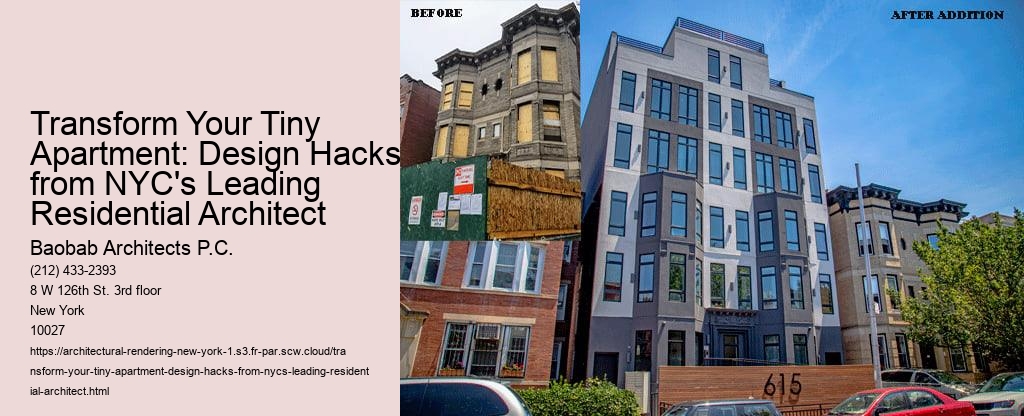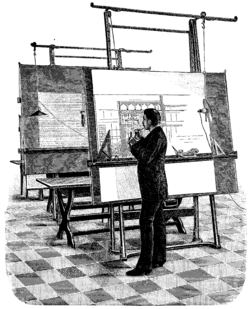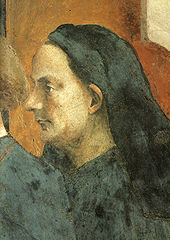
New York City's property architects are renowned for their capability to change confined quarters into livable, functional spaces. With the city's thick populace and overpriced property rates, these design experts have actually developed a toolkit of methods to make best use of every square inch. One innovative technique is multi-functional furniture: believe beds with integrated storage or table that exchange offices. However it's not practically furniture; it's also regarding creating impressions of space with strategic lighting and mirrored surfaces, which can make a tiny room show up nearly dual its dimension!
Comprehending that each customer has one-of-a-kind demands, New York City designers dive deep right into personalized services. For example (and there are many), they might create personalized shelving that fits comfortably right into or else unusable nooks or consist of concealed areas in walls for added storage space. These customized treatments are critical due to the fact that they reflect an person's way of life while making sure the space continues to be clutter-free and visually pleasing.
When you can not expand outwards, the only method is up! Designers in New York City City have become masters at utilizing vertical area-- installing loft space beds or raised systems for offices and lounges are common techniques of the profession. High ceilings are taken advantage of with tall shelving units and even by adding additional mezzanine levels where zoning codes allow. This not just produces more flooring location but likewise adds personality and dimension to a studio or one-bedroom house!
To put it short, today's NYC designers aren't simply concentrated on maximizing room; they're additionally devoted to sustainability and wise home modern technology that enhances living experiences within small footprints. Integrating energy-efficient devices, sustainable products, and home automation systems can considerably decrease ecological effect while providing citizens with modern-day conveniences-- genuinely an exciting time for city dwellers looking to live huge in little spaces!
An architect is a professional who is educated and licensed to plan, layout, and look after the building and construction of buildings. They are associated with every phase of the growth procedure from the initial principle to the completed structure. Designers should possess a combination of creative style abilities and useful technical knowledge to ensure that structures are safe, functional, aesthetically pleasing, and satisfy the requirements of their residents. Their duty involves collaborating with various professionals such as engineers, service providers, and city planners to bring their layouts to life within the restrictions of spending plan, guidelines, and structural stability.
An engineer is a expert in charge of the planning, style, and oversight of structure construction. The term " engineer" comes from the Latin "architectus," which consequently is originated from the Greek words "arkhi-" ( principal) and "tekton" ( home builder), meaning primary home builder.
Throughout history, there was no clear difference between architects and designers up until relatively contemporary times. Commonly, master builders or craftsmens like stone masons and carpenters carried out both the layout and building and construction of structures. It had not been till the Renaissance duration in Europe that we started to see a separation in between the duties of an architect and an engineer.
One historic figure that played a considerable role fit what we now take into consideration the occupation of style is Filippo Brunelleschi, an Italian designer noteworthy for his work throughout the Renaissance. He is particularly respected for his development of straight point of view, which transformed just how room could be illustrated in art and layout-- a technique that ended up being vital for architectural representation.
Before the advent of paper becoming extensively offered in Europe around 1500 adhered to by pencils being utilized for drawing by 1600, architects often relied on even more fundamental tools to interact their styles. With these new products at their disposal, pre-construction illustrations ended up being an essential part of building technique enabling architects to convey their principles extra clearly.
In terms of education and professional technique, it has ended up being typical throughout a lot of established countries that exercising design calls for licensure or registration with pertinent authorities. This commonly includes acquiring a level from a college program recognized in architecture, finishing useful experience through internships or practicums, and passing extensive evaluations.
Designers have actually additionally traditionally been entailed with seeking advice from different experts such as structural engineers or mechanical designers throughout the layout process to guarantee all aspects are well-coordinated. Making use of innovation has actually significantly influenced modern architectural practice with tools like Structure Information Modeling (BIM) and computer-aided design (CAD) becoming sector requirements.
Along with developing buildings that are aesthetically pleasing and useful, engineers must also adhere to neighborhood building ordinance and guidelines including zoning regulations, safety and security standards, environmental sustainability criteria-- often including energy-efficient layouts or renewable energy resources right into their tasks.
The cost structure for architects' solutions can differ yet has actually generally been based upon portions associated with building value or taken care of round figure depending upon project intricacy. Architects may likewise specialize within particular locations such as lasting style or historical preservation or move right into related fields like realty growth or urban planning.
There are numerous professional companies around the world dedicated to supporting architects in their profession advancement including The International Union of Architects (UIA), The American Institute of Architects (AIA), Royal Institute of British Architects (RIBA), among others.
Acknowledgment within the field can come through honors and honors such as Fellowships within specialist companies based on contributions to architecture using quality in layout or education and learning. One remarkable award is the Pritzker Reward-- usually described as "the Nobel Prize for style"-- which recognizes remarkable ability worldwide.
| This article needs additional citations for verification . ( October 2014 ) |
 An architect, 1893. | |
| Occupation | |
|---|---|
| Names | Architect |
| Occupation type | Profession |
| Activity sectors | Architecture Civil engineering Structural engineering Construction Project management Urban planning Interior design Visual arts |
| Description | |
| Competencies | Engineering, technical knowledge, building design, planning and management skills |
| Education required | See professional requirements |
An architect is a person who plans, designs, and oversees the construction of buildings. [ 1 ] To practice architecture means to provide services in connection with the design of buildings and the space within the site surrounding the buildings that have human occupancy or use as their principal purpose. [ 2 ] Etymologically, the term architect derives from the Latin architectus , [ 3 ] which derives from the Greek [ 4 ] ( arkhi - , chief + tekton , builder), i.e., chief builder. [ 5 ]
The professional requirements for architects vary from location to location. An architect's decisions affect public safety, and thus the architect must undergo specialised training consisting of advanced education [ 6 ] and a practicum (or internship) for practical experience to earn a license to practice architecture. Practical, technical, and academic requirements for becoming an architect vary by jurisdiction though the formal study of architecture in academic institutions has played a pivotal role in the development of the profession .
Throughout ancient and medieval history, most architectural design and construction was carried out by artisans —such as stone masons and carpenters—who rose to the role of master builders. Until modern times, there was no clear distinction between architect and engineer. In Europe, the titles architect and engineer were primarily geographical variations that referred to the same person, often used interchangeably. [ 7 ] [ 8 ] "Architect" derives from Greek ἀρχιτέκτων ( arkhitéktōn , "master builder," "chief tektōn ). [ 5 ]

To make the most of limited square footage in New York City apartments, residential architects often employ several key design strategies. These include multi-functional furniture, built-in storage solutions, vertical space utilization with high shelves and lofted areas, and an open floor plan to create a sense of spaciousness. Mirrors can also be used strategically to amplify natural light and give the illusion of a larger room.
In small living spaces, lighting plays a crucial role not only in functionality but also in creating an illusion of more space. Employing layered lighting with a mix of ambient, task, and accent lights can enhance the overall ambiance while making rooms feel larger. Natural light should be maximized with reflective surfaces and translucent window treatments; artificial lighting should be carefully planned to eliminate dark corners and visually expand the space.
Custom-built solutions are tailored specifically to the unique dimensions and needs of a small living space. They can optimize every inch by fitting into irregular spaces or serving multiple purposes—for example, a bed with built-in drawers or a dining table that converts into a workspace. Custom cabinetry can align seamlessly with walls to reduce visual clutter, thereby making spaces feel tidy and more spacious.
Innovative materials such as transparent or reflective surfaces help bounce light around a room, giving an airy feel. Lightweight and movable partitions enable flexible layout configurations. Advances in construction techniques have led to thinner insulation materials that preserve interior space without compromising thermal efficiency. Modern wall beds that fold up during the day or compact appliances designed for tiny kitchens also contribute significantly to saving valuable space.
| New York | |
|---|---|
| Midtown Manhattan with the Empire State Building (center) and Lower Manhattan with One WTC (background) | |
| Nicknames: | |
| |
Coordinates: 40°42′46″N 74°00′21″W / 40.7127°N 74.0059°W / 40.7127; -74.0059[2]Country United StatesState New YorkConstituent counties (boroughs)Bronx (The Bronx)
Kings (Brooklyn)
New York (Manhattan)
Queens (Queens)
Richmond (Staten Island)Settled1624 (1624)Consolidated1898 (1898)Named forJames, Duke of YorkGovernment
• TypeStrong mayor–council • BodyNew York City Council • MayorEric Adams (D)Area
• Total472.43 sq mi (1,223.59 km2) • Land300.46 sq mi (778.18 km2) • Water171.97 sq mi (445.41 km2)Highest elevation
401 ft (122 m)Lowest elevation
0 ft (0 m)Population
• Total8,804,190 • Estimate
8,258,035 • Rank1st in the United States
1st in New York State • Density29,302.7/sq mi (11,313.8/km2) • Urban
19,426,449 • Urban density5,980.8/sq mi (2,309.2/km2) • Metro
20,140,470DemonymNew YorkerGDP
• Total$1.206 trillion (2022) • Metro$2.163 trillion (2022) (1st)Time zoneUTC–05:00 (EST) • Summer (DST)UTC–04:00 (EDT)ZIP Codes
Area codes212/646/332, 718/347/929, 917FIPS code36-51000GNIS feature ID975772Websitenyc
Further information: List of bridges and tunnels in New York City and Commissioners' Plan of 1811
The Manhattan Bridge and Brooklyn Bridge on the East River
Streets are also a defining feature of the city. The Commissioners' Plan of 1811 greatly influenced its physical development. New York City has an extensive web of freeways and parkways, which link the city's boroughs to each other and to North Jersey, Westchester County, Long Island, and southwestern Connecticut through bridges and tunnels. Because these highways serve millions of outer borough and suburban residents who commute into Manhattan, it is common for motorists to be stranded for hours in traffic congestion that are a daily occurrence, particularly during rush hour.[568][569] Congestion pricing in New York City will go into effect in 2022 at the earliest[needs update].[570][571][572] Unlike the rest of the United States, New York State prohibits right or left turns at red traffic signals in cities with a population greater than one million, to reduce traffic collisions and increase pedestrian safety. In New York City, therefore, all turns at red lights are illegal unless a sign permitting such maneuvers is present.[573]
The George Washington Bridge, across the Hudson River, is the world's busiest motor vehicle bridge.[574][575]
Thank you for recognizing our commitment to sustainability! Baobab Architects P.C. prioritizes eco-friendly design, seamlessly blending aesthetics with environmental consciousness. Our architects incorporate cutting-edge technologies and materials to create sustainable spaces that stand the test of time. Dive deeper into our green initiatives at www.baobabarchitects.com/. Join us in crafting a greener tomorrow – schedule a consultation now!
Your curiosity warms our hearts! Baobab Architects P.C. specializes in enhancing your home's curb appeal with timeless and contemporary architectural designs. From captivating facades to strategic landscaping, we turn your residence into a masterpiece. Discover the possibilities by scheduling a consultation with our experts at www.baobabarchitects.com/. Let's embark on a journey to make your home a neighborhood gem!
We're thrilled by your interest in our commercial expertise! Baobab Architects P.C. excels in crafting dynamic and functional spaces for businesses in the bustling heart of New York City. Discover how we elevate commercial architecture at www.baobabarchitects.com/. Ready to redefine your business space? Contact us for a consultation, and let's turn your vision into a reality that captivates clients and inspires success!